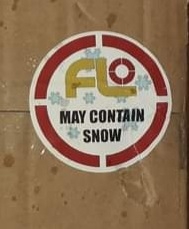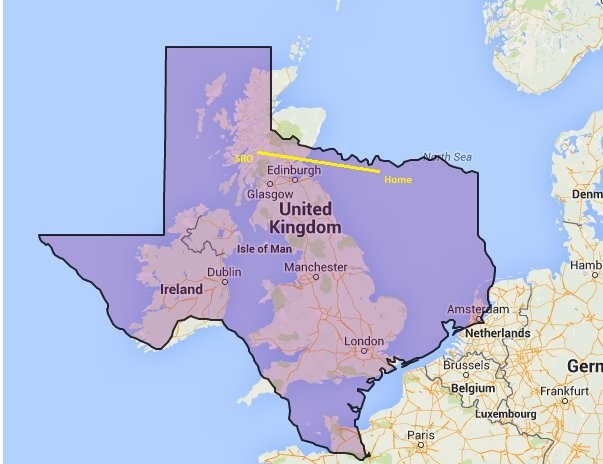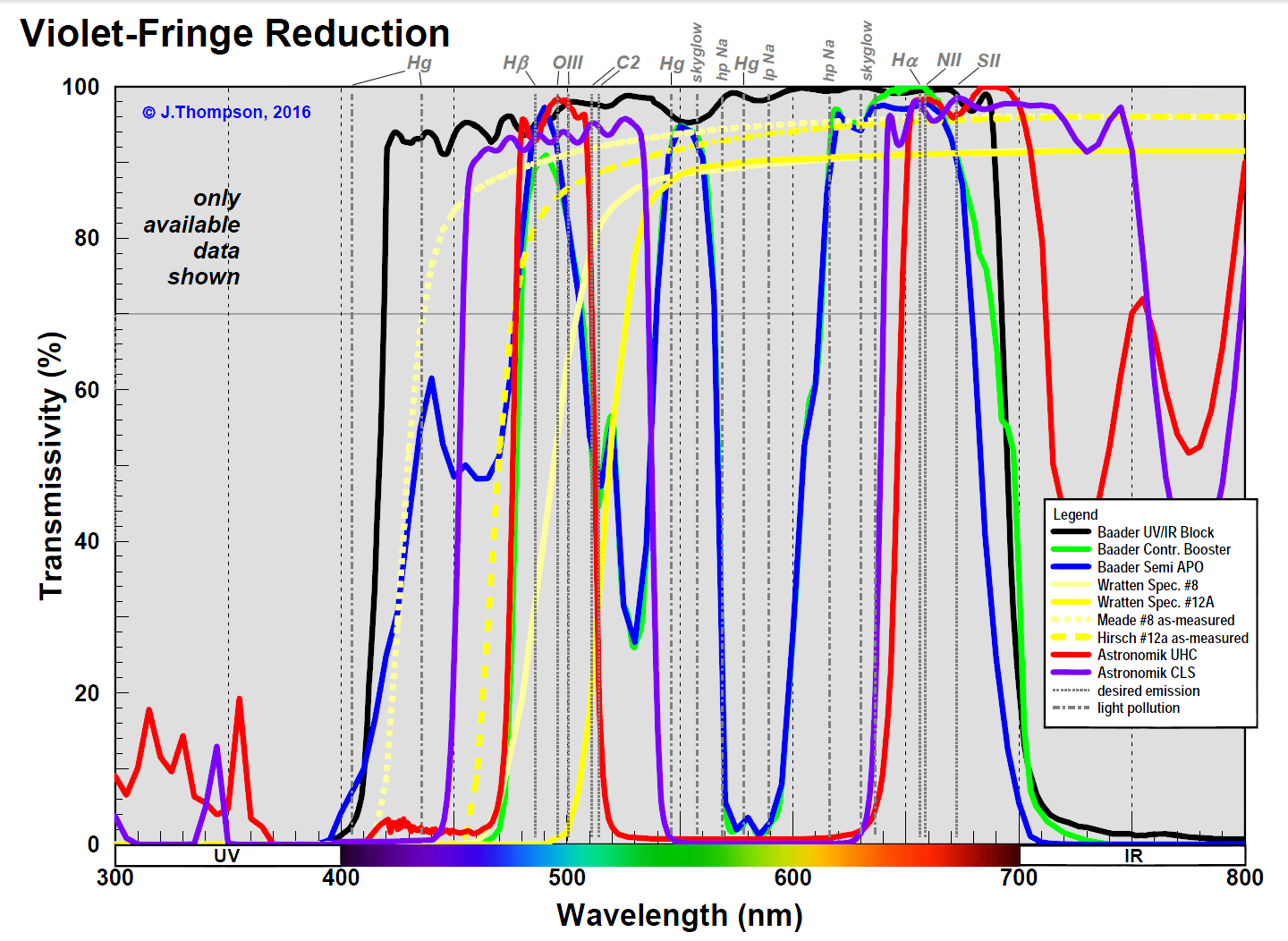
Louis D
-
Posts
9,366 -
Joined
-
Last visited
-
Days Won
1
Content Type
Profiles
Forums
Gallery
Events
Blogs
Posts posted by Louis D
-
-
On 29/11/2021 at 02:20, Ian McCallum said:
Maybe someone got this one with their order up at the Tan Hill Inn.
-
4 hours ago, Boki Aristarh said:
My first "serious" scope was Copitar small refractor 50/300 mm, made in Japan.
It was so long ago, 25 years or so... Lot of nights with it, watching Venus, Jupiter, Saturn, Moon, Sun, brighter M, doubles....
In mean time telescope was lost, used as parts donator....
And as a strike of luck and fortune and find same one scope on some bargain sale, and of course I bought it...
Now it is mine FOREVER!
I picked up a Chinese made copy of this scope, except it is 70mm/300mm, for about $25 brand new just as lock down started. Interestingly, there's a ~35mm metal aperture stop just behind the objective lens and another 50% stop midway down the focuser tube. I assume both were to improve the image quality by doubling the f-ratio. I removed the objective stop by simply pushing it out after removing the lens cell and focuser. I then made a 2" focuser from PVC plumbing parts. Now, I've got a 70mm super finder when used with a 2" 40mm eyepiece like my Pentax XW or Meade 5000 SWA yielding 7.5x at 9.3 degrees TFOV. Field curvature is high, so I use a spare TSFLAT2 ahead of the diagonal to good effect. I find it ironic I'm putting about $700 of optical parts behind a $25 70mm objective. But hey, I had them laying around for other purposes, so no biggie.
-
The problem I've had with some lower cost 90+ degree eyepieces is that the eye relief is so short and my eyes are so deep set in my sockets that I simply cannot push in close enough to see the entire field at once because the top of the eyepiece is typically too broad to fit within my eye socket. I've even seen this with vintage ~80 degree AFOV binoculars that had rigid eye cups which were about as deep as the usable eye relief. Even with my eyeglasses off I couldn't take in the entire AFOV.
Other UWA eyepieces have too much SAEP to be able to take in the entire AFOV at once, such as the Meade MWA 26mm, and to a lesser extent, the 12mm and 17mm Nagler T4s. I have to pull back a bit to get a usable exit pupil with these eyepieces, losing a bit of AFOV in the process.
I haven't had either issue with the 12mm ES-92 thanks to its fairly well controlled SAEP (not perfect, but not terrible) and long usable eye relief.
-
 1
1
-
-
I think in some cases, it helps for the scope to have been at the top of the heap in terms of quality at the time it was made. Quite a few AP refractors from the 80s and 90s are referred to as classics in the classifieds with the caveat that they aren't quite at the top of the APO heap anymore, but are still excellent performers.
-
 1
1
-
-
On 26/11/2021 at 21:24, ONIKKINEN said:
For whatever reason i had thought that comacorrector + barlow is a big no no
Not really, it's just that some CC/Barlow combinations simply won't come to focus in some telescopes due to limited in or out focus.
-
On 28/11/2021 at 13:47, CCD-Freak said:
The DFW/San Antonio/Houston Texas Triangle would cover England with ease (60,000 mi² vs 50,000 mi²).
-
 1
1
-
-
1 hour ago, vlaiv said:
Wratten #8 is closer to 495 long pass in its characteristics.
Both start at 450nm and raise up to 500nm, but Baader hits 500nm at 95% transmission - with steeper curve and higher general transmission reaching 97-98%.
Wratten #8 reaches only 60% at 500nm and peaks at 525nm.
Wratten #12 starts beyond 500nm and reaches peak at 550nm.
As cutoff filter - 495 is the best as it has the steepest curve.
I've got a #8 pale yellow filter labelled as minus violet similar to the Meade #8 below, and it doesn't do nearly enough on an ST80 to improve contrast that's lost to stray violet light, so I've got a GSO #12 on order for $15 to see if it improves the view. I'm sure a Baader 495 Long Pass would be superior, but I'm not willing to spend $53 on an experiment involving what appears to be a non-interference coating filter. I'll also try stacking it with a generic M&SG filter I've got to see what effect that has as well.
This graph indicates yellow color filters to be a bit of gamble as to what you'll actually get, so I'm going to try going more saturated this time:

If the #12 yellow doesn't cut it, I could always try a #15 dark yellow.
-
 3
3
-
-
1 hour ago, Don Pensack said:
I compared ROR to Windex and a lens cleaner that was a mix of isopropyl alcohol and water.
ROR was vastly superior to the other two.
I also compared it to a Nikon lens cleaning fluid you don't mention. The Nikon fluid was very close, but ROR was still better at removing oils and mascara stains.
When cleaning completely disassembled eyepieces during refurbishment, I've found hand washing with dish detergent and my finger tips over a folded towel (as a safety catch) to be the best way to completely remove really stuck on oil and organic goop. I then finish with the solvent based cleaners and microfiber cloth to get things squeaky clean and streak/spot free.
-
20 hours ago, Girders said:
If you're observing from an urban area, then an increase in aperture isn't going to make any difference to being able to see galaxies etc. Anything you can see will be a faint grey smudge and even using a goto won't help.
I've found that having a large aperture in light polluted skies allows globular clusters to nicely resolve at powers above 200x. Small apertures simply don't have the resolution or limiting magnitude to do this. At higher powers on smaller targets, light pollution is much less of a problem than on large objects at lower powers. Many planetary nebula also respond well to aperture in light polluted skies. Planets also respond well to increased aperture if they are high enough above your local horizon and the seeing is steady.
-
 1
1
-
-
Most likely dust motes on the field lens of the eyepiece because it is closest to the focal plane and thus are most nearly in focus. Take the eyepiece out of the focuser, flip it around, and look at the bottom lens. It should be fairly simple to clean them off once you identify them.
-
Basically, since California requires this label, it's cheaper and easier to stick it on every box regardless of where it's being sold. If CA was a small market, it would probably be ignored and/or boycotted by manufacturers.
California's latest effort to bend the world to its will is P12 which effectively bans the sale of out of state pork in their state.
-
Apple, pear, and grape juices often contain trace amounts of arsenic, and I've yet to see a P65 warning on them.
-
I "wonder" if anyone has done a lens cleaning solution comparison between Baader Optical Wonder Fluid, Residual Oil Remover (ROR), Zeiss Lens Cleaning Wipes, and Windex. To reiterate and expand on an earlier post of mine, here are their ingredients:
- Ammonia 26° - 0.775%
- Sodium Chloride - 0.830%
- Isopropyl Alcohol - 4.266%
- Liquid Soap - 9.011%
- Distilled Water - 85.118%
Baader Optical Wonder Fluid MSDS:
- Ethanol - 25%
- Propan-1-ol (n-Propanol or n-Propyl Alcolhol) - 35%
Zeiss Lens Cleaning Wipes MSDS:
- AQUA = Water
- Propan-2-ol = Propanol
- Ethanol = Ethanol
- 5-CHLORO-2-METHYL-2H-ISOTHIAZOL-3-ON = Methylchoroisothiazolinon
- 2-METHYL-2H-ISOTHIAZOL-3-ON = Methylthiazolinon
- 2-Butoxyethanol - 0.5-1.5%
- Ethylene glycol hexyl ether - 0.5-1.5%
- Isopropyl Alcohol - 1-5%
- Water - 60-100%
Windex Glass Cleaner Website Ingredients:
- 2-Hexoxyethanol
- Isopropanolamine
- Ammonium Hydroxide
- Lauryl Dimethyl Amine Oxide
- Sodium Dodecylbenzene Sulfonate
- Water
-
3 hours ago, 12green said:
Thanks for help. Are Vixen SLV are warmer/cooler colour on axis than Starguiders.
If they're similar to the older LVs, then they are warmer and view a bit darker.
-
The Barlow may also push the exit out a bit, increasing eye relief. It may also induce kidney beaning (SAEP) with some eyepieces in my experience. This is because the eyepiece is expecting a converging rather than a diverging bundle of rays. Telecentric magnifiers solve these two issues by adding a second lens group above the magnifying lens group to reconverge the light rays.
-
 1
1
-
-
Have you flipped over the mount to see if there is a 3/8" photo tripod female thread in the center of the azimuth axis? If so, you can just screw it onto any photo tripod that uses a 3/8" bolt thread to attach tripod heads. It would even work with a 1/4" tripod thread via an inexpensive 1/4" to 3/8" adapter.
-
If the NLV/SLV top screwed down flush with the eye lens like the old LV roll down eye cup, then I'd have no gripe against it. However, just like the BST Starguider eye cups, it does not, and so it robs about 4mm of usable eye relief from the eyepiece. That's enough to go from comfortable to unusable for an eyeglass wearer like me with deep set eyes.
-
 1
1
-
-
4 minutes ago, TheLookingGlass said:
Out of curiosity, do you have a 31mm Axiom LX? I'm curious as to how much it weighs with the cover off of it.
I have the original mushroom top 30mm ES-82 which is most similar to the 30mm Meade 5000 UWA. Decloaked, mine weighs 973g, a savings of 396g. In a recent thread here on SGL, another member reported their decloaked 31mm Axiom LX weighs about 10%, or 100g, more than my ES-82. It was reported to weigh 1082g in that thread.
-
 1
1
-
-
8 hours ago, refractor2345 said:
So if you want to know why I want that eyepiece because it seems weird having only a 0.2mm difference and so why would they make it? Also, I didn't know the difference between LER and Non - LER eyepiece, can some one explain that?
No one really knows why they introduced the 3 new LER eyepieces to replace the older ones they're adjacent to. Perhaps they had gotten so much feedback about tight eye relief in the older versions that they thought it would be prudent for them to redesign them and issue longer eye relief versions.
 7 hours ago, Voyager 3 said:
7 hours ago, Voyager 3 said:From the reports elsewhere , the newer LER versions don't seem to be as good as the older ES 82° series .
So far, I haven't seen a detailed comparison of each focal length against its older predecessor, just some anecdotal reports. If you've seen one, could you link to it?
-
27 minutes ago, TheLookingGlass said:
Yes, I can "*just* see the entire 100 degrees with glasses, with the glasses just touching the rubber eye guard folded downwards. I put a baader morpheus eyeguard on my 20mm XWA.
Man, I envy your face structure then. I can barely manage seeing the entire field of NT4 eyepieces with my deep set eyes. I've thought about using a monocle 🧐 for astigmatism correction since my really tall and narrow nose bridge wouldn't come into play as much with one. I've never been keen on wearing contacts, so that's not an option for me.
-
 1
1
-
-
I use the GSO CC with a fixed separation of about 75mm. I simply added a 25mm M48 spacer ring between the included eyepiece holder and the optics nose piece. As long as you're within 5mm of the design distance, it's hard to perceive much residual coma. Generally, eyepiece field curvature and edge astigmatism drown it out. I've only had to parfocalize one eyepiece with it, the 12mm Nagler T4. It focuses about 20mm below the shoulder, so I added a 20mm M48 ring to the 2" skirt along with 5 4mm thick O-rings of 50mm ID. When you're 20mm out, the residual coma is quite apparent.

I have no idea if the TS Maxfield CC will be as forgiving as the GSO CC, but it might be.
Keep us informed of your experimentation in case someone else wants to try it in the future as well.
-
A Vivitar Series 1 100-500mm telephoto lens from my photography hobby that I adapted to telescope usage with a 25mm macro extension ring, some PVC pipe fittings to get to 1.25" ID, lots of thumb screws, and a 9mm Vixen LV I bought to use with it straight through due to lack of back focus. It made for a really cool, variable focal length, variable f-ratio telescope. Once I had split the Trapezium with it, I was hooked and bought a Dob the next year.
-
 3
3
-
-
The back focus distance would refer to the focal plane of the eyepiece which is generally close to the shoulder or reference surface of the eyepiece where the lower insertion barrel widens out to the upper barrel.
You could simply add M48 spacer rings screwed into the bottom of the eyepiece that would then screw into the top of the CC as one approach to get the required 55mm of spacing. This is how the Baader MPCC is generally used with eyepieces.
Alternatively, you could try to use it with an eyepiece holder such as the Baader ClickLock with M48 female thread, again with M48 spacer rings as needed to reach the proper spacing.
-
 1
1
-
-
2 hours ago, Kon said:
I have the 6.7mm and it is an excellent EP. I find it very handy with my Dob since the planets/moon stay in the FOV for longer. It barlows very well but that depends on seeing. I also have the 8.8 one, also excellent, when seeing is ok; I upgraded from the 8mm BST.
Have you had a chance to compare it with the newer 6.5mm 82° LER that the OP is asking about?












"MAY CONTAIN CLOUDS"
in Discussions - Eyepieces
Posted
The media has dubbed this event "Snowasis". 😏